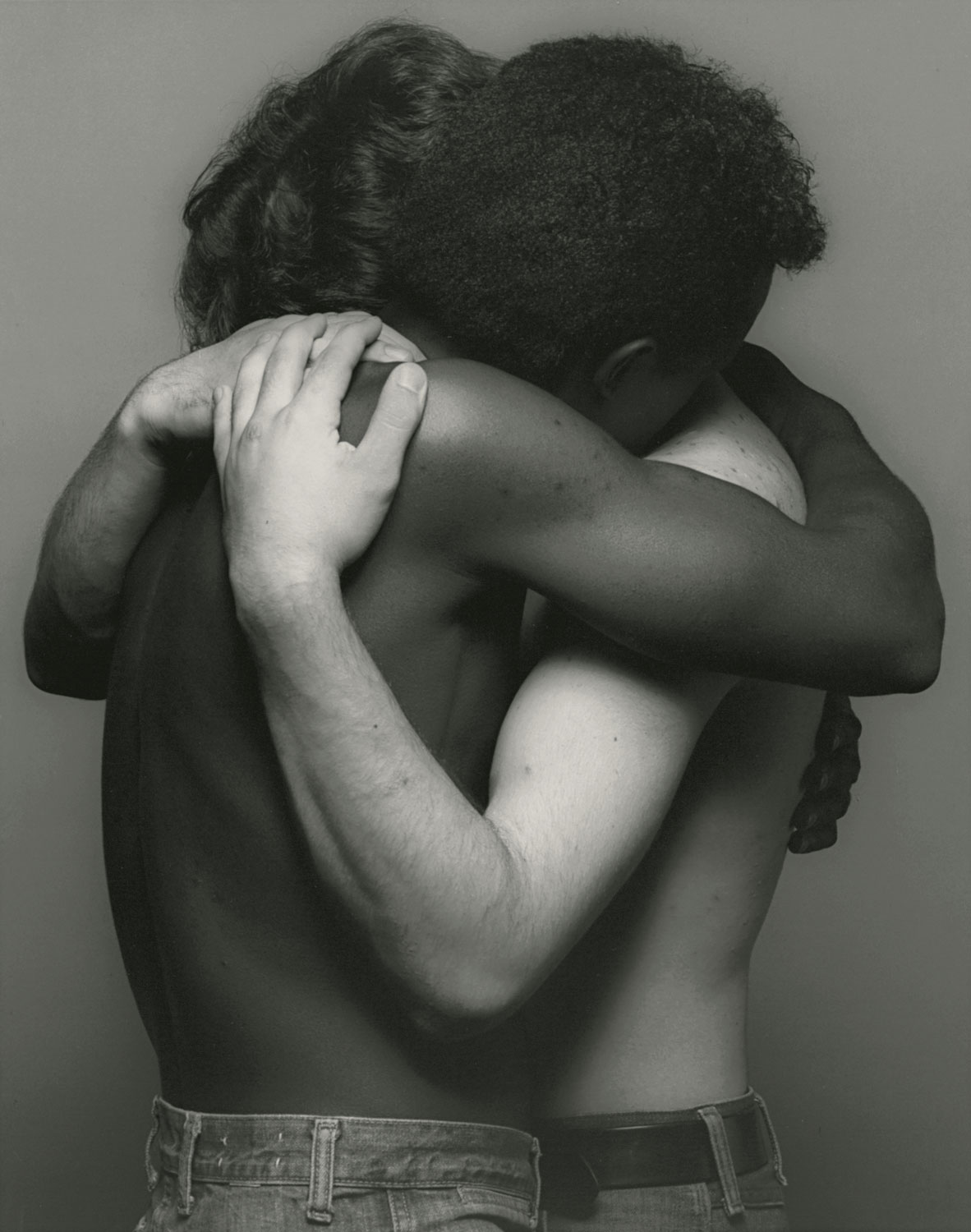Robert Mapplethorpe: Photographs from The Kinsey Institute Collection are on display through November 22 at Indiana University’s Grunwald Gallery. Presented jointly by the Grunwald Gallery and The Kinsey Institute, the exhibition marks the first time this group of photographs has been publicly shown.
Mapplethorpe is considered by art historians to be one of the most significant artists of the 20th century. His striking black-and-white photographs capture a classical beauty that is both formal and raw.
In 2011, The Kinsey Institute received a gift of 30 prints from the Robert Mapplethorpe Foundation. These photographs dating from 1976 to 1985 are excellent examples of Mapplethorpe’s more challenging work. Some of the gelatin silver prints are nude or clothed portraits, while others contain explicit homosexual and heterosexual imagery from the New York S&M scene.

At the time of the gift, foundation president Michael Stout described the works as some of the artist’s “most memorable and most difficult.” The Kinsey Institute was chosen to receive this group of photographs because of its scholarly mission and IU’s storied record of academic freedom, Stout said.
On October 24, Andrew Moisey will present the gallery talk “Robert Mapplethorpe: Pleasure and Pain” at noon in the Grunwald. Moisey is a postdoctoral fellow at the Center for Cultural Analysis at Rutgers University.
Though Mapplethorpe is well known for a variety of subjects, including celebrity portraits and flower studies, his more explicit photographs have sparked a wider public dialogue.
In 1989, a retrospective of Mapplethorpe’s work, The Perfect Moment, helped ignite a fierce culture war after Republican Sen. Jesse Helms discovered that the National Endowment for the Arts had awarded the Institute of Contemporary Art in Philadelphia 30,000 USD toward the exhibition. A battle ensued over the government’s role in funding for the arts.
One year later, the same exhibition provoked local law enforcement in Cincinnati, Ohio, to accuse Cincinnati’s Contemporary Arts Center and its director of pandering pornography and promoting obscenity. A famous trial resulted in which the definition of art itself was the essential issue. Art and the exhibition prevailed, as all charges were dismissed.
Robert Mapplethorpe: Photographs from The Kinsey Institute Collection opens 25 years after the artist’s death and the opening of The Perfect Moment retrospective. All 30 Mapplethorpe photographs from the Kinsey Collection will be featured, along with materials that address the controversy surrounding the 1989 exhibition and the culture wars of the early 1990s.
The Mapplethorpe exhibition and related events provide an opportunity to examine changes in the social climate that may or may not have occurred over the past several decades. What lasting effects did the culture wars have on the public’s perception of art? Did Mapplethorpe make the exploration of this subject matter more or less difficult for other artists? How does one determine what is obscene and what is art?
A companion exhibition, Beyond Mapplethorpe, features images by photographers who either influenced his work or were his contemporaries in the 1970s and 1980s. The show of more than 20 photographs from The Kinsey Institute includes work by Tom Bianchi, George Platt Lynes, Len Prince, Bettina Rheims, Herb Ritts and Arthur Tress. Although these images may not be as overtly sexual as some of Mapplethorpe’s photographs, they reveal the same interest in exploring and expanding the artistic possibilities of the human figure.
The Mapplethorpe exhibition and corresponding programs have been made possible by The College Arts and Humanities Institute in the College of Arts and Sciences, the Grunwald Gallery of Art, and the Kinsey Institute for Research in Sex, Gender and Reproduction, all at Indiana University; the Robert Mapplethorpe Foundation in New York; and the Kling Family Foundation of Tustin, California.
For further information, contact the Grunwald Gallery: T +1 812 855 8490 / grunwald@indiana.edu. All events are free and open to the public.
Grunwald Gallery of Art
Studio Art Department
Henry Radford Hope School of Fine Arts
1201 E 7th Street
Indiana University
Bloomington, IN 47405
Hours: Tuesday–Saturday noon–4pm, or by appointment

